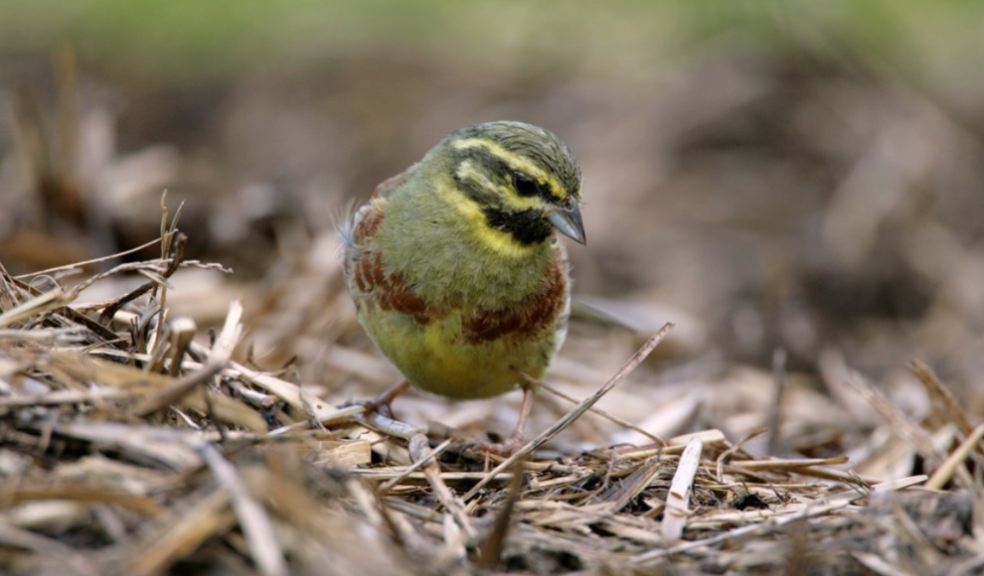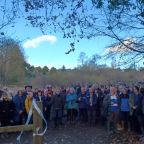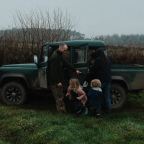
Can you help the West Country’s special cirl buntings this spring?
The RSPB are appealing for volunteers across Devon and Cornwall to help them carry out their annual Cirl Bunting Survey, between April-August of this year. People can register to take part in the survey on the Cirl Bunting Action Hub, visit: bit.ly/RSPBCirlHub
Here volunteers can select a 2km by 2km survey square local to their home on the RSPB’s map and plan a survey route through their chosen patch along Public Rights of Way and covering the areas that cirl buntings are likely to make their homes. No specialist skills are needed to take part other than an interest in birds and a pair of binoculars. The Cirl Action Hub offers guidance on how to identify cirls by sight and sound.
Volunteers will be asked to visit their chosen survey square twice – first visit before the end of May and second visit anytime from June to the end of August, leaving two weeks between visit one and two. They will then record information about any cirl bunting they see or hear and submit their findings either online or via post.
This year the RSPB are putting a special shout-out for surveyors in the South Hams and South Teignbridge area, which had low coverage last year.
Just over 30 years ago cirl buntings were in a state of serious decline and had already vanished from Cornwall and Somerset. With the support of the RSPB, farmers and landowners have been able to bring the cirl bunting back from the brink.
Cath Jeffs, RSPB Conservation Officer, said: “Taking part in the Cirl Bunting Survey is a fantastic opportunity to get to know the amazing wildlife on our doorstep. As well as hopefully spotting a cirl or two, volunteers will discover the other farmland bird species they share their local patch with. And most importantly, survey volunteers will be contributing directly to science. The data that volunteers help us gather over the coming years will allow us to spot trends in cirl numbers, so that we can identify any early warning signs and act quickly to help to help ensure the cirl bunting population does not become in danger of being lost from UK again.”
Cath continues: “The volunteer support we received for last year’s survey was fantastic and with the results just in we’re pleased to say that nearly 60% of the survey squares which returned their data, recorded cirls in them. In fact, six of these locations recorded cirls for the first time since surveys began in the late 1980s – this is really positive news”.
Eighty years ago, cirl buntings were widespread across southern England and parts of Wales, but by 1989 they were down to only 118 pairs mainly confined to Devon. These plummeting numbers were due to changes in farming practises, which made it hard for the cirls to find food and suitable nest sites.
In 1992 the Countryside Stewardship Scheme (a government-funded agri-environment scheme, CSS) launched a cirl bunting 'special project' option for farmers. Under guidance from the RSPB, farmers provided low input spring barley crops which, after harvest, were left as weedy stubbles until the end of March. This created an important source of winter seed food for the cirls.
In 1993 the RSPB employed a cirl bunting project officer in the south west to work directly with farmers and landowners to encourage them to provide more homes for the cirl buntings. By 1998 cirl bunting numbers increased to 450 pairs and in 2016 they passed the 1000 pair mark.
During last year’s survey, volunteers Tracy and Simon Gould, made the fantastic discovery of the very first cirl bunting on farmland at Shillingford Organics on the outskirts of Exeter. Owner Martyn Bragg, has been carefully managing this field, with guidance from the RSPB, to give cirl buntings a home for the past 23 years and finally they have arrived. Martyn is “over the moon”.
Tracy and Simon said: “We signed up to carry out the RSPB survey initially for the 2sq km square containing both our home, and our local veg box grower - Shillingford Organics. We were delighted to encounter our first singing male cirl bunting at Martyn’s farm, announcing his presence after all these years of waiting, in ‘bold as brass’ fashion, from the dip of a telegraph wire above a wide hedge line.”











